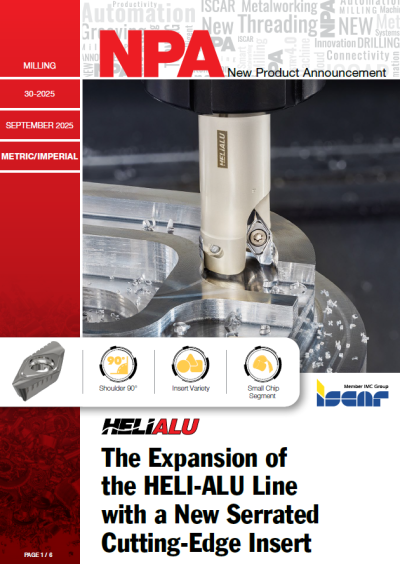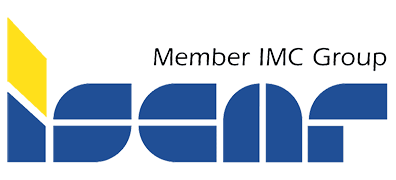
Iscar's HELI-ALU LINE of tooling includes a new insert with serrated edges. The new insert, designated as HSM90S APCR 140520R-FWP28, features a radius of 2.0mm (.0787”). It has a super positive and sharp serrated cutting edge geometry, along with a polished rake surface, which ensures efficient milling for aluminum alloys and other non-ferrous materials. (ISO N grade of application)
The cutting-edge geometry of the insert splits the chips into small pieces and generates low cutting forces, enabling increased feed rates for higher machining productivity.
Serrated cutting edge advantages
- Wide chips are divided into small segments. This greatly contributes to effective chip evacuation and diminish negative re-cutting.
- Reducing cutting forces and decreasing heat generation lessen the mechanical and thermal loads on a tool, enabling prolonged tool life which can be translated into higher productivity by increasing cutting parameters.
- Improving the tool’s dynamic behavior ensures stable cutting in unfavorable conditions (high tool overhang, thin-wall workpieces, poor workholding etc.).
Insert features
- Wide sharp-edged wiper for improved surface finish.
- Ground insert periphery for improved precision.
- Polished rake and relief surfaces to improve chip flow and eliminate built-up edge (BUE).
- Dividing a wide chip into smaller segments significantly improves chip evacuation, enhancing tool performance even when using high-speed machining (HSM) methods.
Contact Details
Related Glossary Terms
- alloys
alloys
Substances having metallic properties and being composed of two or more chemical elements of which at least one is a metal.
- aluminum alloys
aluminum alloys
Aluminum containing specified quantities of alloying elements added to obtain the necessary mechanical and physical properties. Aluminum alloys are divided into two categories: wrought compositions and casting compositions. Some compositions may contain up to 10 alloying elements, but only one or two are the main alloying elements, such as copper, manganese, silicon, magnesium, zinc or tin.
- built-up edge ( BUE)
built-up edge ( BUE)
1. Permanently damaging a metal by heating to cause either incipient melting or intergranular oxidation. 2. In grinding, getting the workpiece hot enough to cause discoloration or to change the microstructure by tempering or hardening.
- feed
feed
Rate of change of position of the tool as a whole, relative to the workpiece while cutting.
- gang cutting ( milling)
gang cutting ( milling)
Machining with several cutters mounted on a single arbor, generally for simultaneous cutting.
- milling
milling
Machining operation in which metal or other material is removed by applying power to a rotating cutter. In vertical milling, the cutting tool is mounted vertically on the spindle. In horizontal milling, the cutting tool is mounted horizontally, either directly on the spindle or on an arbor. Horizontal milling is further broken down into conventional milling, where the cutter rotates opposite the direction of feed, or “up” into the workpiece; and climb milling, where the cutter rotates in the direction of feed, or “down” into the workpiece. Milling operations include plane or surface milling, endmilling, facemilling, angle milling, form milling and profiling.
- rake
rake
Angle of inclination between the face of the cutting tool and the workpiece. If the face of the tool lies in a plane through the axis of the workpiece, the tool is said to have a neutral, or zero, rake. If the inclination of the tool face makes the cutting edge more acute than when the rake angle is zero, the rake is positive. If the inclination of the tool face makes the cutting edge less acute or more blunt than when the rake angle is zero, the rake is negative.
- relief
relief
Space provided behind the cutting edges to prevent rubbing. Sometimes called primary relief. Secondary relief provides additional space behind primary relief. Relief on end teeth is axial relief; relief on side teeth is peripheral relief.
- wiper
wiper
Metal-removing edge on the face of a cutter that travels in a plane perpendicular to the axis. It is the edge that sweeps the machined surface. The flat should be as wide as the feed per revolution of the cutter. This allows any given insert to wipe the entire workpiece surface and impart a fine surface finish at a high feed rate.

